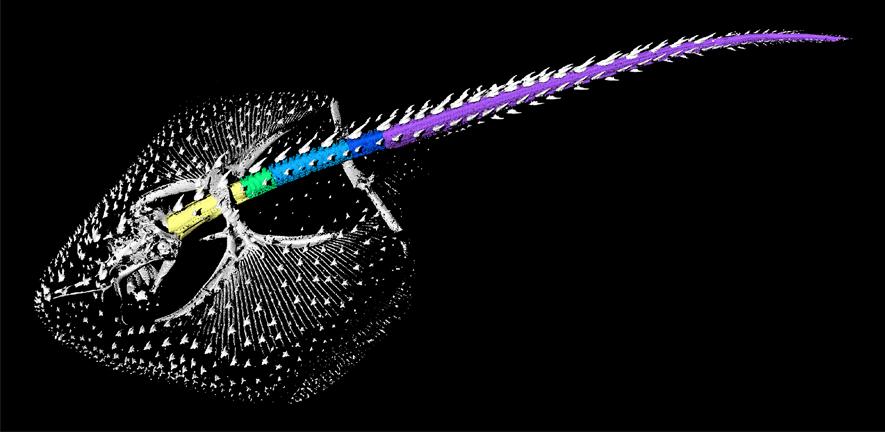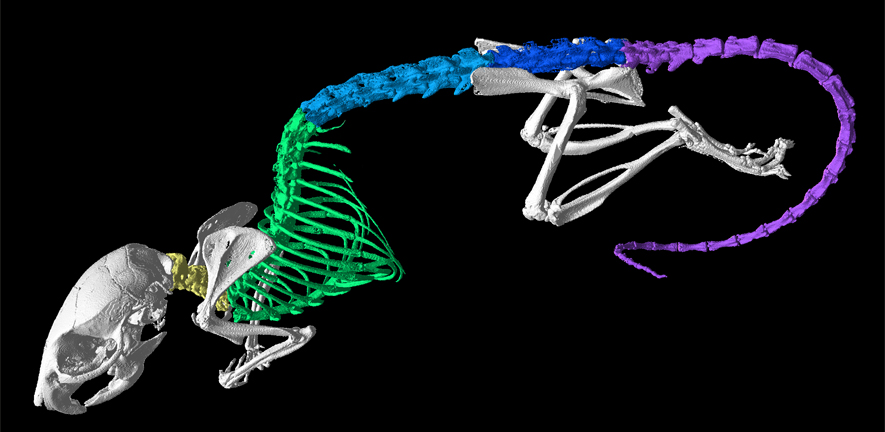
Submitted by Rachel Aucott on Wed, 15/12/2021 - 10:39
The backbone of land animals (tetrapods) is a complex structure that is subdivided into distinct “regions” (cervical, trunk, sacral, and caudal). The boundaries between these regions are determined by the expression patterns of a family of genes called "Hox genes” during early embryonic development. Fishes are thought to possess a relatively simple backbone that lacks complex regions, and so it is widely held that a regionalised backbone arose with the transition from water to land.
In this study, we used microCT scanning with sophisticated 3D measurement and statistical methods to quantify shape differences along the backbone of a cartilaginous fish (the skate, Leucoraja erinacea - a close relative of sharks and stingrays). We found that skates actually have a much more complex backbone than was previously appreciated, with five regions, that is very similar to the tetrapod backbone. We next looked at the expression of hox genes in skate embryos, and found that they are expressed in the early skate embryo in patterns that are, again, reminiscent of tetrapods. Finally, we tracked the skeletal fate of the expression boundaries of selected hox genes in the early skate embryo by labelling cells with a dye that binds to the cell membranes and is passed down through cell division. We found that the same hox genes that delineate backbone region boundaries in tetrapods also do so in skate. This suggests that the regionalised backbone of tetrapods likely did not arise with the transition to land, but rather originated hundreds of millions of years earlier, in the last common ancestor of all jawed vertebrates.
The study was led by Dr Katharine Criswell and included two students postgraduate students Lucy Roberts (PhD student in the Vertebrate Palaeontology Group), Eve Koo (MPhil student in the Gillis Lab), as well as group leaders, Jason Head and Andrew Gillis. The study was funded by NERC.
Katharine E. Criswell, Lucy E. Roberts, Eve T. Koo, Jason J. Head, and J. Andrew Gillis, hox gene expression predicts tetrapod-like axial regionalization in the skate, Leucoraja erinacea, Proceedings of the National Academy of Sciences Dec 2021, 118 (51) e2114563118; DOI: 10.1073/pnas.2114563118
The CT scans are of a mouse and a skate shown in lateral view and colour-coded to show the different regions of the backbone to show their similarity. The scanning was done in the Cambridge Biotomography Centre.

